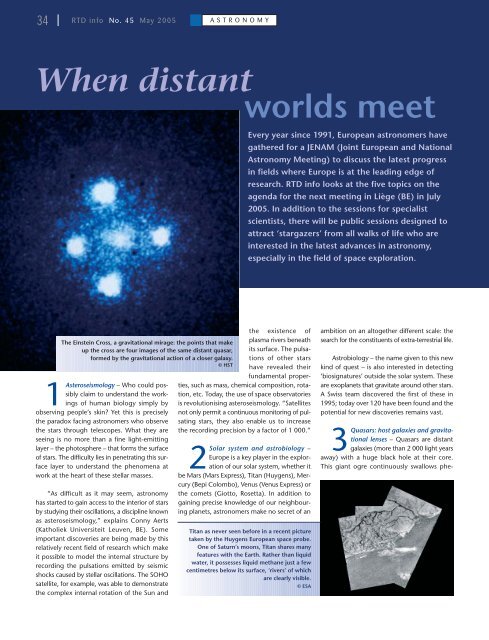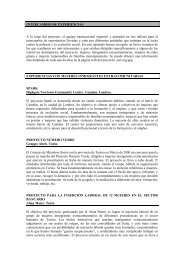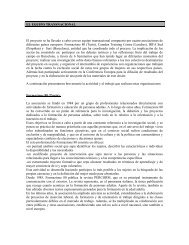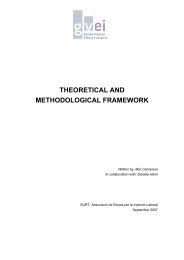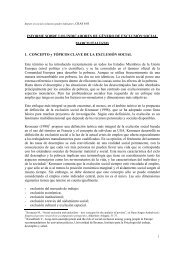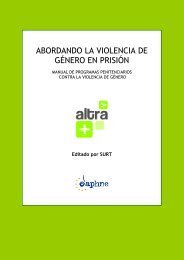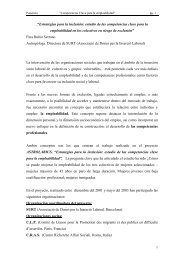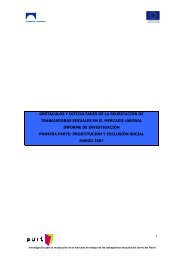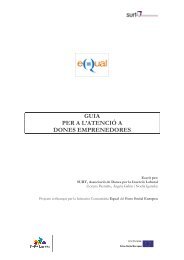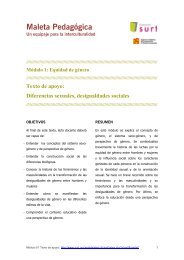When distant worlds meet34 <strong>RTD</strong> <strong>info</strong> No. 45 May <strong>2005</strong> ASTRONOMYEvery year since 1991, European astronomers havegathered for a JENAM (Joint European and NationalAstronomy Meeting) to discuss the latest progressin fields where Europe is at the leading edge ofresearch. <strong>RTD</strong> <strong>info</strong> looks at the five topics on theagenda for the next meeting in Liège (BE) in July<strong>2005</strong>. In addition to the sessions for specialistscientists, there will be public sessions designed toattract ‘stargazers’ from all walks of life who areinterested in the latest advances in astronomy,especially in the field of space exploration.The Einstein Cross, a gravitational mirage: the points that makeup the cross are four images of the same distant quasar,formed by the gravitational action of a closer galaxy.© HST1Asteroseismology – Who could possiblyclaim to understand the workingsof human biology simply byobserving people’s skin? Yet this is preciselythe paradox facing astronomers who observethe stars through telescopes. What they areseeing is no more than a fine light-emittinglayer – the photosphere – that forms the surfaceof stars. The difficulty lies in penetrating this surfacelayer to understand the phenomena atwork at the heart of these stellar masses.“As difficult as it may seem, astronomyhas started to gain access to the interior of starsby studying their oscillations, a discipline knownas asteroseismology,” explains Conny Aerts(Katholiek Universiteit Leuven, BE). Someimportant discoveries are being made by thisrelatively recent field of research which makeit possible to model the internal structure byrecording the pulsations emitted by seismicshocks caused by stellar oscillations. The SOHOsatellite, for example, was able to demonstratethe complex internal rotation of the Sun andthe existence ofplasma rivers beneathits surface. The pulsationsof other starshave revealed theirfundamental properties,such as mass, chemical composition, rotation,etc. Today, the use of space observatoriesis revolutionising asteroseismology. “Satellitesnot only permit a continuous monitoring of pulsatingstars, they also enable us to increasethe recording precision by a factor of 1 000.”2Solar system and astrobiology –Europe is a key player in the explorationof our solar system, whether itbe Mars (Mars Express), Titan (Huygens), Mercury(Bepi Colombo), Venus (Venus Express) orthe comets (Giotto, Rosetta). In addition togaining precise knowledge of our neighbouringplanets, astronomers make no secret of anTitan as never seen before in a recent picturetaken by the Huygens European space probe.One of Saturn’s moons, Titan shares manyfeatures with the Earth. Rather than liquidwater, it possesses liquid methane just a fewcentimetres below its surface, ‘rivers’ of whichare clearly visible.© ESAambition on an altogether different scale: thesearch for the constituents of extra-terrestrial life.Astrobiology – the name given to this newkind of quest – is also interested in detecting‘biosignatures’ outside the solar system. Theseare exoplanets that gravitate around other stars.A Swiss team discovered the first of these in1995; today over 120 have been found and thepotential for new discoveries remains vast.3Quasars: host galaxies and gravitationallenses – Quasars are distantgalaxies (more than 2 000 light yearsaway) with a huge black hole at their core.This giant ogre continuously swallows phe-
ASTRONOMY <strong>RTD</strong> <strong>info</strong> No. 45 May <strong>2005</strong>35nomenal quantities of the gas present in the host galaxy. Before dying,these gaseous masses engage in a magnificent swan song that makes themone of the brightest bodies in the universe.“Due to this brilliance, quasars are the most distant objects we areable to study, giving us access to a primordial universe,” explains FrédéricCourbin (Ecole Polytechnique Fédérale de Lausanne, CH). The lightemitted by these distant beacons illuminates the intergalactic environmentthat places its signature on their spectrum, making it possible todetermine the moment when the first stars illuminated the universe. Also,due to general relativity, the light of quasars can be deflected by closergalaxies – which have a lens effect – and give rise to gravitationalmirages. “The study of these cosmic mirages is an instrument of analysisby the Hubble Constant, the cosmological key to the theory of theexpanding universe and thus to the time elapsed since the Big Bang.”phenomena such as the mysterious collisions of stellar winds, of whichwe were unaware just a few decades ago.There remain many unanswered questions. “We have a generalidea of their evolution,” stresses Ian Stevens, “but the details remain vague,especially the way in which these stars die.”(1) Fixed-direction observation device, compensating for the Earth’s rotation.4Roadmap for interferometry – A fairly recent tool forastronomers, interferometry is based on a simple principle.Instead of using a very large telescope, a number of smallerdevices are used and their signals are combined, resulting in a comparableobservation quality at a significantly reduced cost. This technique,nevertheless, requires a degree of precision in combining the beams thatis much smaller than the wavelength, which is why for a long time itwas limited to long radio waves. European astronomers succeeded intransposing this technique to the field of the visible in which wavelengthsdo not exceed the micron. They are currently developing the most powerfulinterferometric instrument in the world, the VLTI (Very Large TelescopeInterferometer). Installed in Chile, the VLTI uses siderostats (1)measuring 40 cm across. With this modest equipment, scientists havealready obtained a number of important results, including the determinationof the real size of cepheids and the thickness or elongation ofcertain stars, etc.5Massive stars and high-energy emission – “Very massive andvery hot stars have a major effect on their environment,sculpting the interstellar environment and sowing the universewith the heavy chemical elements that are now all around us. Sometimesthey are even able to modify the structure of galaxies,” explains Ian Stevens(University of Birmingham, UK).European space observatories, such as Integral and XMM-Newton Il,have made it possible to observe these objects in the high energies ofthe OB Associations. Here they show their true nature, revealing violentA hot star (over 120 000 degrees on the surface, compared with the6 000 degrees of our Sun) heats the centre of the nebula. The mauvecolour indicates the hottest areas where temperatures can reachseveral thousand degrees.© ESOFor the stargazersLight seems a familiar concept to us, but it holds someunsuspected secrets. It was not until about 200 years ago andthe discovery of infrared rays that the immensity of theelectromagnetic spectrum first became apparent. Over the past 50years, the discovery of these new ‘colours’ that are invisible to thenaked eye – in the gamma, X, ultraviolet, infrared and radio fields– has caused a revolution in astronomy, revealing a mysteriousbackground radiation, strange pulsating stars and very activegalaxies. This ‘Rainbow Universe’ will be presented by Yaël Nazé,of the Institut d'Astrophysique et de Géophysique de Liège, on theoccasion of the JENAM <strong>2005</strong>. Otherplanned activities include a nocturnalsky observation session entitled ‘Travelin Space’, and a ‘science café’ on thequestion “Is there life in the universe?”.All these will take place in the companyof astrobiologists and officials from theTo find outmore0 Yaël NazéInstitut d’Astrophysiqueet de Géophysique,Liège University (BE)naze@astro.ulg.ac.beEuropean Space Agency (ESA) space exploration programmes.www.astro.ulg.ac.be/RPub/Colloques/JENAM/outreach/outreach_fr.html


